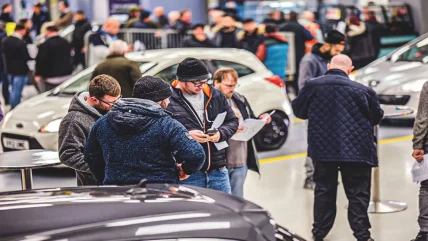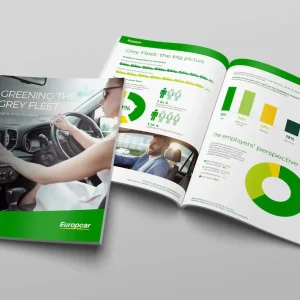
The average UK house cost about £240,000 in January 2020 according to the Halifax House Price Index. It was just under £280,000 in August of this year – down 1.9% month-on-month and 4.6% year-on-year – having peaked at circa £295,000 in the middle of 2022. In a nutshell, houses are cheaper than they have been in recent times, but they are still about 40 grand dearer, on average, than they were just before the pandemic.
You could be forgiven for questioning why an automotive publication is waffling on about domestic property, but it is because of the massive parallel with used car values. What now seems like the long-term rhetoric around second-hand vehicles is that they are hideously expensive, and there are not enough of them to go around. The market has been leaning on the latter end of the supply and demand concept for years.
That is still true. A three-year-old car with 60,000 miles on the clock will almost certainly cost more today than the same car of the same age and mileage before the pandemic, and September trade price figures (pictured) for five popular used cars from 2019 to 2023 from Cap HPI prove it.
All five cars had three things in common: they did not follow a traditional depreciation curve (getting cheaper over time), their values experienced an upward bell curve, albeit inconsistent, at some point between 2020 and 2022, and they were all worth less in 2023 than in 2022.
The pound-note difference between September 2019 and September 2023 is where it gets interesting. Two of the five – the 2019 Ford Fiesta and the 2016 Mazda MX-5 – were respectively worth £750 and £250 more in 2023 than in 2019. The remaining three cars were worth less: the 2018 BMW 5 Series lost £1,450, the 2018 Kia Sportage £1,250, and the 2013 Audi A3 £100.
“It’s not quite as simple as ‘everything went up and everything’s coming down’,” says Cox Automotive’s insight director, Philip Nothard, “we’d only just gone into the lockdowns in March of 2020, so the reality is, that Fiesta hadn’t moved anywhere in that period anyway; it was a fairly stable product. People forget how strong the used car market was in quarter one 2020, just before we went into lockdown.
“Then we came out of the lockdowns and we went into an accelerated market. That same Ford Fiesta went up to 15 grand. That’s an expensive car plus margin. It’s still worth more now than it was back then [in 2019], so there’s an element of the stock shortage to it.”
He says the BMW – the biggest monetary loser of the five examples – is arguably more representative of the overall used car market. Its value is moving closer to a level reflective of a normal, pre-pandemic market, but it is still more expensive than it would have been if you strip out this decade’s topsy-turvy economics.
“Look at the BMW, and £1,450 looks strong compared to the Fiesta being £750 up, but you’ve got to remember that’s four years. Really, that should be a sub-20-grand car, and in a normal market, that would be a £19,999 retail car. Even though it’s dropped from its pre-pandemic price, it’s still strong in the true sense.”
It chimes with Cap HPI’s broader three-year/60,000-mile value figures, which fell between 1% and 2% every month from May to September, after which they were down 7.4% year-to-date. They are expected to continue roughly the same trajectory for the rest of the year.
That does not represent prices ‘falling off a cliff’ in any sense. Values of those same three-year/60,000-mile cars leapt by 22% in 2021, then fell by 9.4% the following year. That left them 12.6% above 2020 levels at the beginning of this year. Shave off September 2023’s 7.4% year-to-date drop, and that still leaves them 5.2% up on 2020 – just like that extra £40,000 on top of your average house.
“It’s actually not that scary when you look at money,” adds Nothard, “if you start applying an average of 2% for the next three months, it [the market] is just getting back to where it kind of should have been.”
Cap HPI reinforced this view when it reported the largest September fall in values in 15 years on the 27th of that month, with a fall of 1.9%/circa £420 for three-year/60,000-mile cars. It added that values of one-year-old cars dropped by 1.6%/circa £575, five-year-old cars by 1.8%/£250 and 10-year-old cars by 2.1%/£115.
The firm said September was typically a strong month for used car prices and that – with the exception of 2021, when they jumped by 5.9% – it would typically expect a small increase in a normal market.
“It is important to put this month’s data into context,” said director of valuation, Derren Martin, at the time, “used car values currently remain some 25-30% above where they were before those extraordinary increases in 2021. The downward movements now being experienced are a relatively gentle realignment, not a crash, and they are no longer increasing in severity – value drops have been consistent for the last three months now.”
What these adjustments have meant is that wholesale used car buyers have started to become choosier about stock. Second-hand vehicles were getting on for blank cheques in the 2021 boom, and it really did not matter if they were rough around the edges, but buyers are now reportedly seeking better quality examples to stick straight on their forecourts – the lowest numerically according to the National Association of Motor Auctions’ one-to-five condition grading scheme.
Speaking at September’s Vehicle Remarketing Association (VRA) webinar, Gordon Cockle, head of vehicle sales at Aston Barclay, explained: “What we’re seeing now is buyers being a little bit more selective [about grades]. When they would have [previously] looked through a search engine for a one to a four, they’re looking for a one to a three, or a one to a two, and a lot of them are after that prime stock. I think we’ll probably see that carry on.”
There are also signs that traditional seasonality has begun to return to the used car market, something that was widely considered to have disappeared since the pandemic. Also speaking at September’s VRA webinar, City Auction Group CEO Michael Tomalin suggested the market was settling back into its usual rhythms.
“[This] has probably been the first year since Covid that we’ve seen seasonal peaks and troughs in the industry, so I’d suggest we’re going to go through a traditional quarter four. August had its challenges, September started slow, but is developing quite nicely, October into November – as it has for many years – should be relatively successful. I think in quarter four. I don’t see any major blips or changes from what it was like prior to Covid.”
Aston Barclay’s Cockle agreed that seasonality was largely back in session but suggested that large buyers such as used car supermarkets may not be out in the usual force towards the end of the year due to general economic uncertainty.
“The only bit I don’t think we’ll see is, historically, in October, we’ve seen some of the big car supermarkets going out aggressively in the market building for the new [year]. I don’t know if we’ll necessarily see that this time around with the cost of living crisis. I think there will still be a little bit of hesitance.
“With the cost of stocking, I don’t think. [they] are going to be brave enough to really hit it until they actually know what January’s going to look like. Are we going to see that third week in January go off like a rocket like we did in the past? We haven’t really seen that of late, and it was before Covid where we could draw a line to say what the market’s going to do.”
Supported by:






